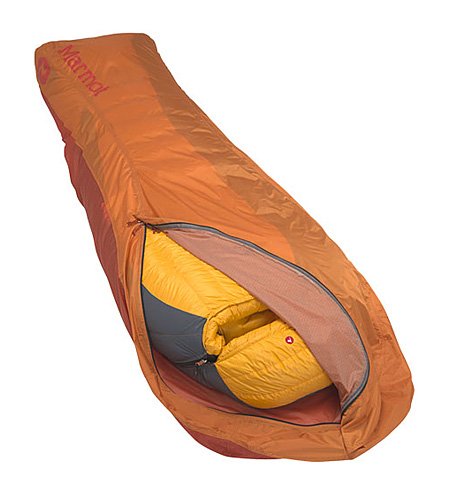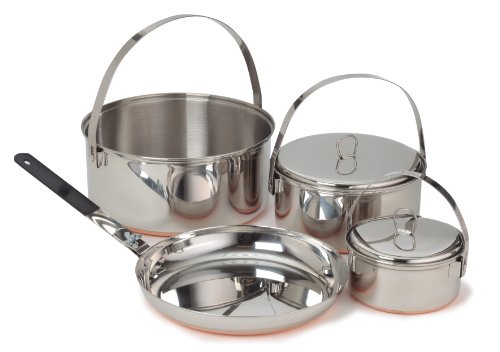Liberty Mountain Ultralight Backpack Rain Cover Review

Liberty Mountain Ultralight Backpack Rain Cover Feature
- See Description
Liberty Mountain Ultralight Backpack Rain Cover Review

E-volve Camping SleepTyte Sleeping bag (certified Fire Retardant) - Lazy Lavender Review

Hanging Camp Organizer by UtiliMate Review

Alpinist Bivy by Marmot Review

Sierra Designs Mountain Meteor 2 Footprint Review

Eldorado Tent - 2 person by Black Diamond Review

Black Diamond Mesa Tent Ground Cloth Review

Reliance Products Glow 9-Inch Glow-In-The-Dark Tent Pegs (4-Pack) Review

Eureka! Timberline 2 - Tent (sleeps 2) Review

It features a breathable nylon wall, polyester fly, and polyester bathtub floor that keeps seams taut and high off the ground for superior protection from the elements. It has a large front door and two windows (on in the door, and one in the back). The windows are closable as well as hooded by the fly, so they can be open even in rain. Other features include:
Specifications:
About Eureka
Though the exact year is unknown, Eureka’s long history begins prior to 1895 in Binghamton, New York, where the company still resides today. Then known as the Eureka Tent & Awning Company, its first wares were canvas products--most notably, Conestoga wagon covers and horse blankets for nineteenth century American frontiersmen--as well as American flags, store awnings, and camping tents.
The company increased production of its custom canvas products locally throughout the 1930s and during the 1940 and even fabricated and erected the IBM "tent cities" just outside Binghamton. The seven acres of tents housed thousands of IBM salesmen during the company’s annual stockholders meeting, which had since outgrown its previous locale. In the 1940s, with the advent of World War II and the increased demand for hospital ward tents, Eureka expanded operations and began shipping tents worldwide. Ultimately, upon the post-war return of the GIs and the resultant housing shortage, Eureka turned its attention to the home front during the 1950s by supplying awnings for the multitude of mobile homes that were purchased.
In 1960, Eureka’s new and innovative Draw-Tite tent, with its practical, free standing external frame, was used in a Himalayan Expedition to Nepal by world renowned Sir Edmund Hillary, the first person documented to summit Mt. Everest only six years earlier. In 1963, Eureka made history during its own Mt. Everest ascent, with more than 60 of its tents sheltering participants from fierce 60+ mph winds and temperatures reaching below -20°F during the first all American Mt. Everest Expedition.
For backpackers and families, Eureka introduced its legendary Timberline tent in the 1970s. Truly the first StormShield design, this completely self-supporting and lightweight backpacking tent became one of the most popular tents the entire industry with sales reaching over 1 million by its ten year anniversary.
Eureka tents have also traveled as part of several historic expeditions, including the American Women’s Himalayan Expedition to Annapurna I in 1978 and the first Mt. Everest ascents by a Canadian and American woman in 1986 and 1988. In recent history, tents specially designed and donated by Eureka sheltered Eric Simonson and his team on two historic research expeditions to Mount Everest, this time in a quest for truth regarding the 1924 attempted summit of early English explorers George Mallory and Andrew Irvine. During the 1999 expedition, the team made history finding the remains of George Mallory, but the complete mystery remained unsolved. Returning in 2001 to search for more clues, the team found amazing historical artifacts which are now on display at the Smithsonian.
Amazon.com Tent Guide
Selecting a Tent
Fortunately, there are all kinds of tents for weekend car campers, Everest expeditions, and everything in-between. Here are a few things to keep in mind:
Expect the Worst
In general, it's wise to choose a tent that's designed to withstand the worst possible conditions you think you'll face. For instance, if you're a summer car camper in a region where weather is predictable, an inexpensive family or all purpose tent will likely do the trick--especially if a vehicle is nearby and you can make a mad dash for safety when bad weather swoops in! If you're a backpacker, alpine climber or bike explorer, or if you like to car camp in all seasons, you'll want to take something designed to handle more adversity.
Three- and Four-Season Tents
For summer, early fall and late spring outings, choose a three-season tent. At minimum, a quality three season tent will have lightweight aluminum poles, a reinforced floor, durable stitching, and a quality rain-fly. Some three-season tents offer more open-air netting and are more specifically designed for summer backpacking and other activities. Many premium tents will feature pre-sealed, taped seams and a silicone-impregnated rain-fly for enhanced waterproofness.
For winter camping or alpine travel, go with a four season model. Because they typically feature more durable fabric coatings, as well as more poles, four-season tents are designed to handle heavy snowfall and high winds without collapsing. Of course, four-season tents exact a weight penalty of about 10 to 20 percent in trade for their strength and durability. They also tend to be more expensive.
Domes and Tunnels
Tents are broadly categorized into two types, freestanding, which can stand up on their own, and those that must be staked down in order to stand upright. Freestanding tents often incorporate a dome-shaped design, and most four-season tents are constructed this way because a dome leaves no flat spots on the outer surface where snow can collect. Domes are also inherently stronger than any other design. Meanwhile, many three-season models employ a modified dome configuration called a tunnel. These are still freestanding, but they require fewer poles than a dome, use less fabric, and typically have a rectangular floor-plan that offers less storage space than a dome configuration. Many one and two-person tents are not freestanding, but they make up for it by being more lightweight. Because they use fewer poles, they can also be quicker to set up than a dome.
Size Matters
Ask yourself how many people you'd like to fit in your fabric hotel now and in the future. For soloists and minimalists, check out one-person tents. If you're a mega-minimalist, or if you have your eye on doing some big wall climbs, a waterproof-breathable bivy sack is the ticket. Some bivy sacks feature poles and stake points to give you a little more breathing room. Also, if you don't need bug protection and you want to save weight, check out open-air shelters.
Families who plan on car camping in good weather can choose from a wide range of jumbo-sized tents that will accommodate all your little ones with room to spare. A wide range of capacities is also available for three- and four-season backpacking and expedition tents. Remember, though, the bigger the tent you buy, the heavier it will be, although it's easy to break up the tent components among several people in your group. It's also helpful to compare the volume and floor-space measurements of models you're considering.
The legendary A-frame tent with over 1 million sold!
Mississippi State Multicolor Tailgate Tent Review

Florida Gators Tent (Blue) Review

Marmot Earlylight 2P Tent Review

Therm-a-Rest NeoAir Trekker Mattress Review

Features:
Specifications:
Regular
Lifetime Warranty
Therm-A-Rest products include a limited lifetime warranty against defects in materials and workmanship.
About Therm-A-Rest
Therm-A-Rest is part of a company named Cascade Designs, started by three friends and former Boeing engineers, Jim Lea, Neil Anderson, and John Burroughs, who were laid off from the aeronautics giant in 1971. Outdoor enthusiasts looking for the next great gear idea, they went on to design the world's first self-inflating mattress, the Therm-A-Rest. Today, Cascade Designs remains a private, family-owned company that has grown to be one of the most respected outdoor manufacturers in the world.
Based on the incredibly successful NeoAir mattress, the NeoAir Trekker mattress brings even more comfort and durability to a proven equation for lgithweight and compact mattress design. Our Triangular Core Matrick technology maintains its promise of twice the warmth of other uninsulated air mattresses alon wth the unique stability that only Neo technology can offer. All of this comfort is encased in a durable yet supple fabric that adds versatility to a long list of reasons why your customers will be looking for this matteress. Stuff sack included. Thickness: 6.3cm/2.5in. Weight: 454g/16oz
Outbound Carmanah Outfitter Stainless Steel Cookset (Silver, Medium) Review

Tent Stake Hand Driver Review

Waterproofer/Seam Sealer Review
